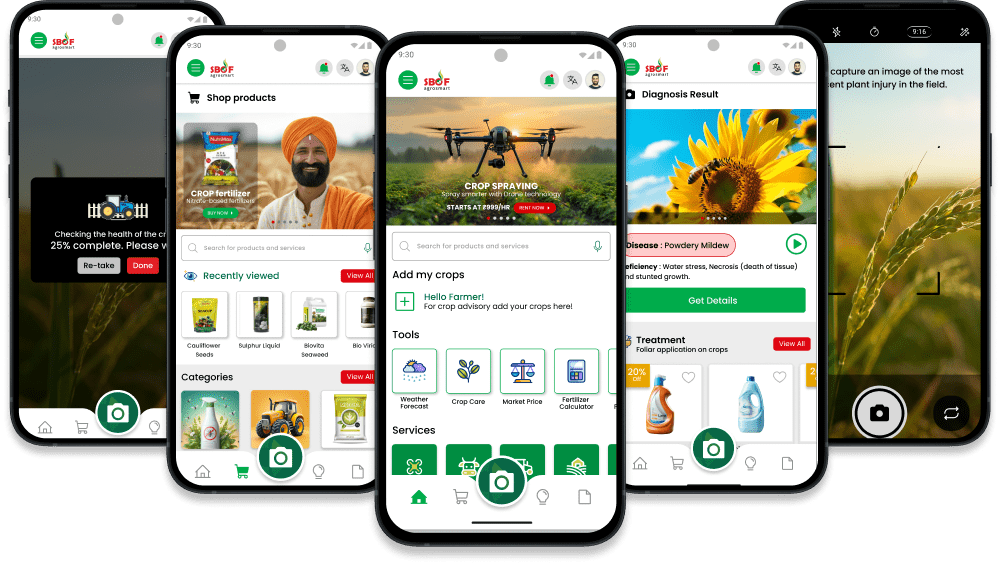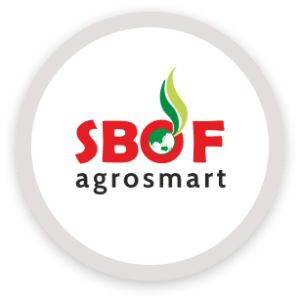

Enhancing Agricultural Solutions with Advanced UX-UI Design and Mobile/Web Application Development at Agrosmart
Customer
Agrosmart, a prominent agricultural solutions provider based in India, aims to empower farmers and agricultural stakeholders with advanced technology integration through their mobile and web applications.
- Limited Access to Agricultural Knowledge: Many farmers lack access to up-to-date agricultural information and practices, hindering their productivity and profitability.
- Technological Divide: Bridging the technological gap between urban developers and rural farmers poses challenges in creating user-friendly and accessible applications.
- Data Connectivity: In rural areas with limited internet connectivity, ensuring seamless data access and application functionality is a significant challenge.
- Cross-Platform Compatibility: Developing applications that are compatible with both mobile and web platforms requires careful consideration of design and functionality.
- User Engagement: Encouraging farmers to adopt and regularly use the applications requires intuitive UX-UI design and features tailored to their needs.
Agrosmart proposes the development of a comprehensive mobile and web application solution to address these challenges:
- User-Centric Design: Utilizing advanced UX-UI design principles to create intuitive and visually appealing interfaces that cater to the needs and preferences of rural users.
- Offline Functionality: Implementing features that allow users to access essential information and perform key tasks offline, mitigating the impact of limited internet connectivity.
- Cross-Platform Compatibility: Developing applications that seamlessly transition between mobile and web platforms, ensuring accessibility for users across different devices and environments.
- Agricultural Knowledge Repository: Curating a repository of agricultural information and best practices within the applications, providing farmers with valuable resources to improve their practices.
- Interactive Features: Incorporating interactive features such as forums, Q&A sections, and real-time chat support to encourage user engagement and facilitate knowledge sharing among farmers.
- Scalable Infrastructure: Building a scalable infrastructure that can accommodate the growing user base and evolving technological needs of the agricultural community.
Implementing the advanced UX-UI design and mobile/web application development processes led to significant improvements:
- Increased Adoption: The user-centric design and intuitive interfaces of the applications resulted in higher adoption rates among farmers, leading to improved access to agricultural knowledge and practices.
- Enhanced Productivity: Farmers benefited from the offline functionality of the applications, allowing them to access critical information and perform tasks even in areas with limited connectivity, thereby enhancing their productivity.
- Improved Collaboration: The interactive features facilitated greater collaboration and knowledge sharing among farmers, creating a sense of community and fostering innovation in agricultural practices.
- Cross-Platform Accessibility: The seamless transition between mobile and web platforms ensured that users could access the applications from various devices, enhancing accessibility and usability.
- Scalability and Growth: The scalable infrastructure supported the growing user base and evolving needs of the agricultural community, positioning Agrosmart as a leader in agricultural technology solutions.
Overall, our innovative approach to integrating advanced UX-UI design and mobile/web application development processes has empowered farmers and agricultural stakeholders with accessible, user-friendly, and impactful solutions, driving positive change in the agriculture industry.
- UX-UI, Figma
- NextJs, React
- NodeJs
- FireBase
- Limited Access to Agricultural Knowledge: Many farmers lack access to up-to-date agricultural information and practices, hindering their productivity and profitability.
- Technological Divide: Bridging the technological gap between urban developers and rural farmers poses challenges in creating user-friendly and accessible applications.
- Data Connectivity: In rural areas with limited internet connectivity, ensuring seamless data access and application functionality is a significant challenge.
- Cross-Platform Compatibility: Developing applications that are compatible with both mobile and web platforms requires careful consideration of design and functionality.
- User Engagement: Encouraging farmers to adopt and regularly use the applications requires intuitive UX-UI design and features tailored to their needs.
Agrosmart proposes the development of a comprehensive mobile and web application solution to address these challenges:
- User-Centric Design: Utilizing advanced UX-UI design principles to create intuitive and visually appealing interfaces that cater to the needs and preferences of rural users.
- Offline Functionality: Implementing features that allow users to access essential information and perform key tasks offline, mitigating the impact of limited internet connectivity.
- Cross-Platform Compatibility: Developing applications that seamlessly transition between mobile and web platforms, ensuring accessibility for users across different devices and environments.
- Agricultural Knowledge Repository: Curating a repository of agricultural information and best practices within the applications, providing farmers with valuable resources to improve their practices.
- Interactive Features: Incorporating interactive features such as forums, Q&A sections, and real-time chat support to encourage user engagement and facilitate knowledge sharing among farmers.
- Scalable Infrastructure: Building a scalable infrastructure that can accommodate the growing user base and evolving technological needs of the agricultural community.
Implementing the advanced UX-UI design and mobile/web application development processes led to significant improvements:
- Increased Adoption: The user-centric design and intuitive interfaces of the applications resulted in higher adoption rates among farmers, leading to improved access to agricultural knowledge and practices.
- Enhanced Productivity: Farmers benefited from the offline functionality of the applications, allowing them to access critical information and perform tasks even in areas with limited connectivity, thereby enhancing their productivity.
- Improved Collaboration: The interactive features facilitated greater collaboration and knowledge sharing among farmers, creating a sense of community and fostering innovation in agricultural practices.
- Cross-Platform Accessibility: The seamless transition between mobile and web platforms ensured that users could access the applications from various devices, enhancing accessibility and usability.
- Scalability and Growth: The scalable infrastructure supported the growing user base and evolving needs of the agricultural community, positioning Agrosmart as a leader in agricultural technology solutions.
Overall, our innovative approach to integrating advanced UX-UI design and mobile/web application development processes has empowered farmers and agricultural stakeholders with accessible, user-friendly, and impactful solutions, driving positive change in the agriculture industry.
- UX-UI, Figma
- NextJs, React
- NodeJs
- FireBase
